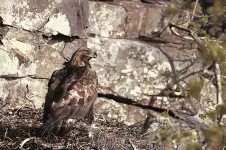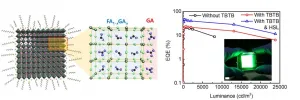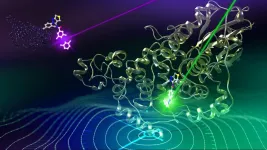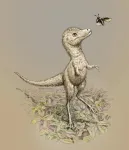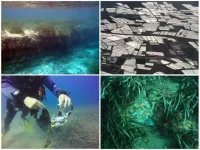GEFS: Searching beyond seismology for earthquake precursors
A proposed collaborative initiative involving researchers in a wide range of fields could lead to better predictions of large-scale seismic events
2021-01-25
(Press-News.org) To predict when earthquakes are likely to occur, seismologists often use statistics to monitor how clusters of seismic activity evolve over time. However, this approach often fails to anticipate the time and magnitude of large-scale earthquakes, leading to dangerous oversights in current early-warning systems. For decades, studies outside the seismology field have proposed that these major, potentially devastating seismic events are connected to a range of non-seismic phenomena - which can be observed days or even weeks before these large earthquakes occur. So far, however, this idea hasn't caught on in the wider scientific community. In this special issue, EPJ Special Topics proposes the Global Earthquake Forecasting System (GEFS): the first collaborative initiative between multi-disciplinary researchers devoted to studying a diverse array of non-seismic earthquake precursors.
By promoting the integration of these ideas with existing theories in seismology, GEFS could lead to significant improvements of earthquake early warning systems; potentially saving lives and protecting critical infrastructures when future disasters hit. The initiative is rationalised via a subtle atomic-level defect-based mechanism for explaining a variety of earthquake precursors, building on decades of laboratory experiments in physical chemistry and solid-state physics. The theory suggests that, as stresses build up in tectonic plates prior to seismic activity, electron-hole pairs are generated in the Earth's crust. The electrons are confined to the stressed rocks, but the positively charged holes flow out into the surrounding, less stressed rocks, producing electrical currents that can travel over large distances. These currents in turn can trigger wide-ranging secondary effects ranging from unusual low to ultralow electromagnetic radiation, to emissions of spectroscopically distinct thermal infrared from the Earth's surface, to changes in the atmosphere and ionosphere.
This special issue documents the findings of researchers around the world, who have used both ground- and space-based observations to link these non-seismic patterns to the occurrence of subsequent large earthquakes. The work creates a strong rationale for global efforts to continually monitor the Earth for key signs of these precursors, which are often intermittent and weak. If its aims are realised, GEFS could be the first step towards a widespread collaboration between different scientific communities, each with the shared goal of improving our ability to forecast large earthquakes in the future.
INFORMATION:
All articles are available here and are freely accessible at https://link.springer.com/journal/11734/volumes-and-issues/230-1 until 21 March 2021.
Reference
F Freund, G Ouillon, A Mignan, D Sornette (2020), Preface to the Global Earthquake Forecasting System (GEFS) Special Issue: Towards Using Non-seismic Precursors for the Prediction of Large Earthquakes, Eur. Phys. J. Special Topics, DOI 10.1140/epjst/e2020-000242-4
ELSE PRESS RELEASES FROM THIS DATE:
2021-01-25
Scientists have shown where bird species would exist in the absence of human activity under research that could provide a new approach to setting conservation priorities.
A study by Durham University, UK, in collaboration with the Royal Society for the Protection of Birds (RSPB), investigated how human activities such as agriculture, deforestation, and the drainage of wetlands have shaped where bird species are found in Great Britain today.
Researchers used data on the geographical distributions of bird species alongside simulation models to predict where bird species would exist today if the effects of human activities on the landscape were removed.
In this scenario there were winners ...
2021-01-25
Public health researchers, led by UNSW Sydney, have estimated the number of cancer cases requiring surgery globally each year, predicting the number will rise from 9.1 million to 13.8 million from 2018 to 2040 - an increase of 52 per cent or 4.7 million cases.
Their research shows the greatest relative increase will occur in 34 low-income countries, where the number of cases requiring surgery is expected to more than double by 2040 (314,355 cases to 650,164, or 107 per cent).
The modelling study, published in The Lancet Oncology on Friday, analysed global demand for cancer surgery and estimated surgical and anaesthesia ...
2021-01-25
Research team at Seoul National University (Prof. Tae-Woo Lee) and University of Pennsylvania (Prof. Andrew M. Rappe) developed perovskite light-emitting diodes (PeLEDs) with an external quantum efficiency (EQE) of 23.4%. The research results were published in Nature Photonics, which is the world-renowned international academic journal, on January 4th (Title: Comprehensive defect suppression in perovskite nanocrystals for high-efficiency light-emitting diodes).
Metal halide perovskites have very narrow spectral emission, excellent color purity, low material cost, and wide and easy color-tunability. ...
2021-01-25
The Nagoya University Institute of Transformative Bio-Molecules (WPI-ITbM) research team of Designated Associate Professor Tsuyoshi Hirota, Postdoctoral Fellow Simon Miller, Professor Kenichiro Itami and graduate student Tsuyoshi Oshima (Research Fellowship for Young Scientists, JSPS), in collaboration with the group of Professor Ben Feringa and Postdoctoral Fellow Dušan Kolarski of Groningen University in the Netherlands, have achieved a world first: fully reversible manipulation of the period of the circadian clock using light, by exchanging part of a compound with a light-activated switch.
Waking in the ...
2021-01-25
Greater sports participation among Aboriginal and Torres Strait Islander children is linked with better academic performance, according to new research from the University of South Australia.
Conducted in partnership with the University of Sydney and the University of Technology Sydney, the world-first study found that Aboriginal and Torres Strait Islander children who played organised sports every year over four years, had numeracy skills which were advanced by seven months, compared to children who did less sport.
The study used data from four successive waves of Australia's Longitudinal Study of Indigenous Children, following 303 students (with a baseline age of five to six years old) to assess cumulative sports participation against ...
2021-01-25
A world-first discovery by researchers at Monash University and The University of Queensland could lead to faster and more effective treatments for chronic health complications, such as cardiovascular disease and cancer, with 'fluorescent' in vivo biosensors.
The research team, led by Dr Simon Corrie from Monash University's Department of Chemical Engineering and the ARC Centre of Excellence in Convergent Bio-Nano Science and Technology, took an antibody that binds EGFR (epidermal growth factor receptor) proteins and engineered it to monitor the concentration of EGFR proteins in serum solutions over time.
Co-authors of the paper, published in ACS Sensors, are Dr Christian Fercher, Dr Martina ...
2021-01-25
They are among the largest predators ever to walk the Earth, but experts have discovered that some baby tyrannosaurs were only the size of a Border Collie dog when they took their first steps.
The first-known fossils of tyrannosaur embryos have shed light on the early development of the colossal animals, which could grow to 40 feet in length and weigh eight tonnes.
A team of palaeontologists, led by a University of Edinburgh researcher, made the discovery by examining the fossilised remains of a tiny jaw bone and claw unearthed in Canada and the US.
Producing 3D scans of the delicate fragments revealed that they belonged to baby tyrannosaurs ...
2021-01-25
Scientists from UNSW Sydney have developed a ceramic-based ink that may allow surgeons in the future to 3D-print bone parts complete with living cells that could be used to repair damaged bone tissue.
Using a 3D-printer that deploys a special ink made up of calcium phosphate, the scientists developed a new technique, known as ceramic omnidirectional bioprinting in cell-suspensions (COBICS), enabling them to print bone-like structures that harden in a matter of minutes when placed in water.
While the idea of 3D-printing bone-mimicking structures is not new, this is the first time such material can be created at room temperature - complete with living cells ...
2021-01-25
The carbon footprint of plastic production for initial use is greater than the global warming impact of the entire process used for medical device reprocessing Use of reprocessed devices is environmentally superior to use of original products in 13 of 16 categories evaluatedReprocessing found to advance "circular economy," a key strategy for reaching the UN Sustainability GoalsLCA offers evidence showing that in order to reduce greenhouse gas emissions and honor the Paris Climate Agreement, EU Member States must opt-in to EU Medical Device Regulation (MDR)'s reprocessing/remanufacturing provisions
[Berlin / Washington, ...
2021-01-25
Large-scale production of vegetables and fruit in Spain with intensive plastic consumption in its greenhouse industry is believed to have leaked microplastic contaminants since the 1970s into the surrounding Mediterranean seagrass beds. This is shown in a new study where researchers have succeeded in tracing plastic pollution since the 1930s and 1940s by analyzing seagrass sediments.
About half of Sweden's cucumbers and a fifth of the tomatoes in Sweden are currently imported from Spain according to the Swedish Board of Agriculture. A special area in Spain where large-scale vegetable cultivation ...
LAST 30 PRESS RELEASES:
[Press-News.org] GEFS: Searching beyond seismology for earthquake precursors
A proposed collaborative initiative involving researchers in a wide range of fields could lead to better predictions of large-scale seismic events
